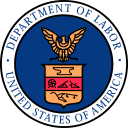One of the few concessions made by the Department of Labor (DOL) to employers in the new overtime regulations is permission to count non-discretionary incentive payments towards the minimum salary threshold for exempt employees. Our firm’s alert on the new regulations can be found here, and, in a nutshell, the new rules bump the minimum salary amount for exempt employees from $455 per week to $913, starting December 1, 2016.
To make the huge increase more palatable, DOL will allow employers to count bonuses and commissions towards the minimum salary, but there are important caveats.
 First, the payments must be made quarterly, or more frequently. Annual bonuses won’t count.
First, the payments must be made quarterly, or more frequently. Annual bonuses won’t count.- If you pay more frequently than quarterly, and don’t hit the minimum, an employer may also make a “catch up” payment no later than the next pay period after the end of the quarter.
- A “catch up” payment only counts against the previous quarter’s salary amount, not the one in which it is paid.
- The DOL still requires that 90 percent of the salary be fixed, and not dependent upon the quality or quantity of work. Payroll records should reflect the fixed salary separately from any fluctuating incentive payments.
Lastly, and most important, the bonus or commissions must be “non-discretionary.” The regulations define this term as “promised bonuses such as those announced to employees to induce them to work more efficiently or to remain with the firm.” The DOL has given examples such as “individual or group production bonuses, or bonuses for quality and accuracy of work.” See 29 C.F.R. 778.211. I suspect that the amount of litigation over whether incentive plans are non-discretionary will increase dramatically with the new regulations because this analysis could be determinative of whether an employee is owed overtime. Simply, if done properly, the employee is lawfully exempt. If a mistake is made, and the employee’s salary does not otherwise meet the minimum threshold without the incentive payment, overtime would be owed. For that reason, employers relying on this 10 percent provision should make sure they thoroughly review their plans with counsel.


Leave a Reply